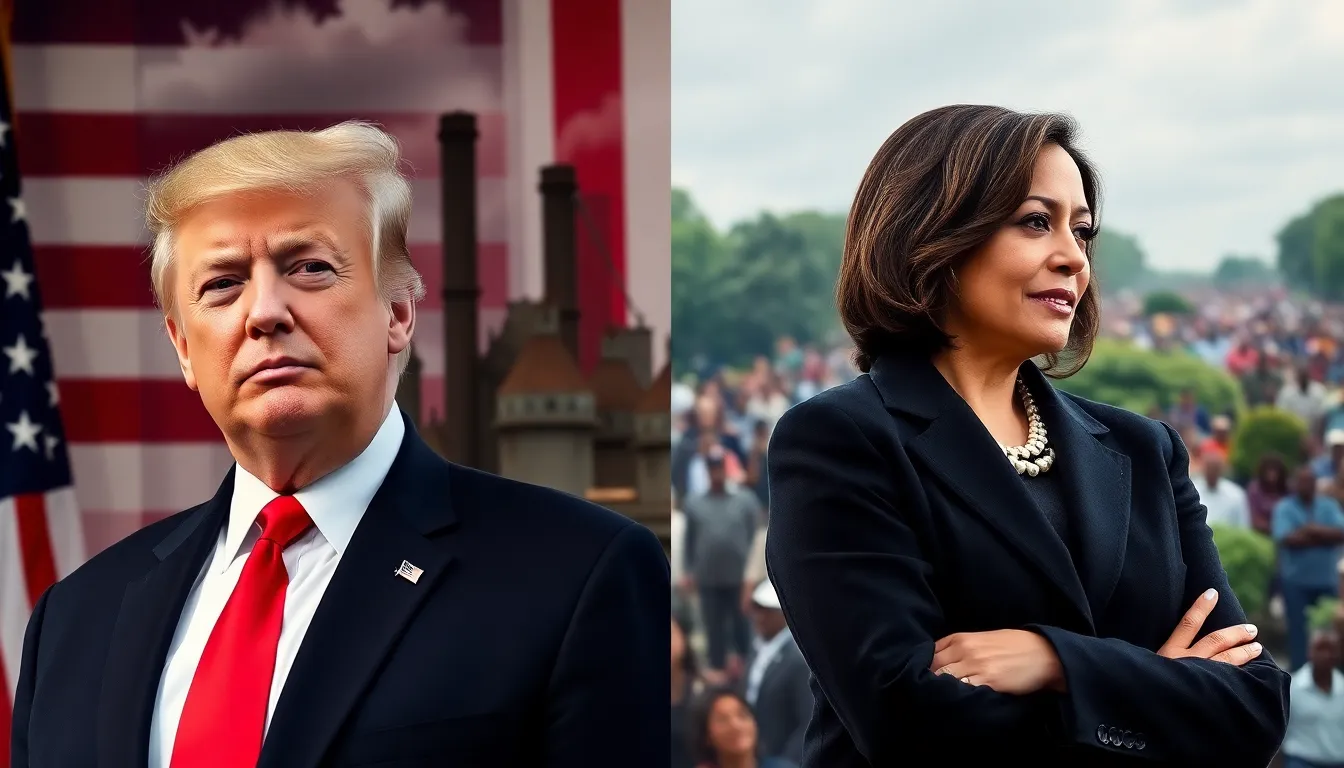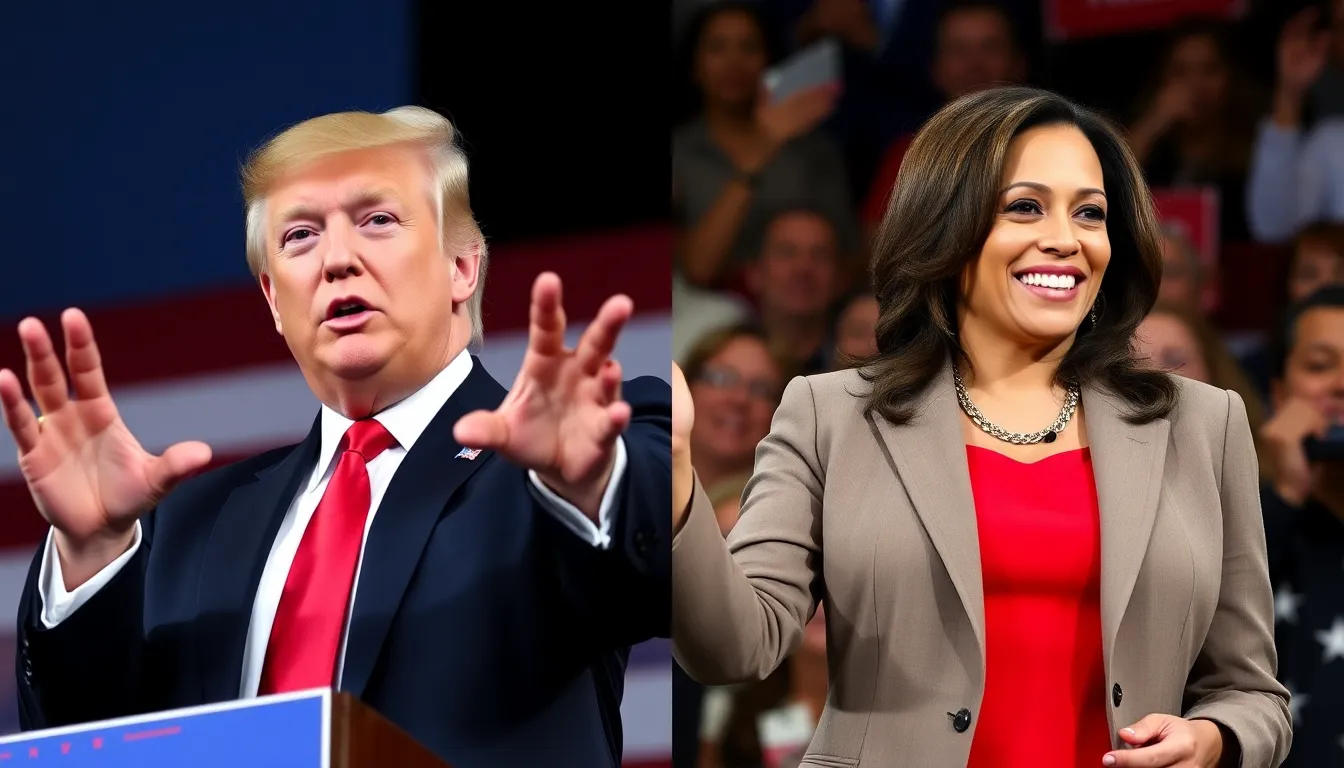Table of Contents
ToggleAs the political landscape heats up, questions about the 2024 election are dominating conversations. With Donald Trump and Kamala Harris emerging as key figures, many are eager to know who holds the edge in this high-stakes race. Each candidate brings a unique set of strengths and challenges, making the competition more intriguing than ever.
Polls, public sentiment, and campaign strategies are constantly shifting, creating a dynamic environment where anything can happen. Understanding who’s ahead isn’t just about numbers; it’s about capturing the pulse of the electorate and predicting how these factors will shape the future. In this article, we’ll explore the latest insights into Trump and Harris’s standings, shedding light on what voters are really thinking as the election approaches.
Overview of Current Polls
Current polling reflects the competitive nature of the race between Donald Trump and Kamala Harris. Tracking shifts in voter sentiment provides insight into how each candidate is perceived.
Recent Polling Data
Recent surveys show fluctuating support for both candidates. According to a September 2023 poll by ABC News, Trump leads Harris by 3 percentage points among likely voters. A Quinnipiac University poll from October 2023 indicates that 48% of respondents express favorable views of Harris, while 44% support Trump. These polls illustrate the tight contest as the election nears.
Key Polling Metrics
Key metrics suggest essential trends impacting each candidate’s chances.
- Approval Ratings: Trump’s approval rating sits at 46%, while Harris’s stands at 50%. This range impacts overall campaign strategies.
- Favorability: Harris enjoys a 5-point advantage in favorability among female voters, critical for electoral success.
- Undecided Voters: Approximately 10% of voters remain undecided, indicating potential for shifts in support as campaigns evolve.
These metrics underscore the importance of addressing key voter concerns and adapting strategies to influence undecided individuals.
Analysis of Candidate Strengths


The strengths of Donald Trump and Kamala Harris significantly influence their positions in the approaching election. Each candidate showcases distinct policy positions and public appeal.
Donald Trump’s Policy Positions
Trump emphasizes a strong economic agenda, advocating for tax cuts and deregulation to stimulate growth. He supports strict immigration policies, promoting border security while proposing a merit-based immigration system. Trump’s foreign policy focuses on an “America First” approach, prioritizing national interests and renegotiating trade deals to favor American workers. His strong stance on crime and law enforcement resonates with a segment of the electorate concerned about public safety. Additionally, Trump’s advocacy for energy independence through fossil fuel development appeals to voters in traditional energy sectors.
Kamala Harris’s Policy Positions
Harris champions social justice issues, focusing on criminal justice reform and equity for marginalized communities. She supports comprehensive immigration reform, emphasizing pathways to citizenship and humane treatment of immigrant families. Her economic policy aims to address income inequality, advocating for higher minimum wages and expanded access to healthcare. Harris’s environmental agenda prioritizes climate change mitigation through renewable energy investments and sustainable practices. Her strong advocacy for women’s rights, including reproductive rights, resonates with a significant portion of the electorate concerned about healthcare access.
Understanding these policy positions reveals critical factors that shape voter perceptions and candidate strengths as the election approaches.
Voter Demographics
Understanding voter demographics highlights the segments of the electorate influencing support for Donald Trump and Kamala Harris. This analysis reveals key voter groups and regional variations shaping the political landscape.
Key Voter Groups
Key voter groups play significant roles in shaping election outcomes.
- Women Voters: Women favor Harris by a 5-point margin, reflecting her appeal on social issues and women’s rights.
- Young Voters: Younger voters lean toward Harris, drawn to her perspectives on climate action and social justice.
- Minority Voters: Harris garners substantial support from Black and Hispanic voters, who resonate with her commitment to comprehensive immigration reform.
- White Working-Class Voters: Trump maintains strong support within this demographic, attributed to his focus on economic issues and job creation.
- Suburban Voters: Both candidates vie for suburban voters, with Harris emphasizing education and healthcare, while Trump prioritizes safety and economic growth.
Regional Variations
Regional variations significantly impact voter sentiment and support for Trump and Harris.
| Region | Trump’s Support | Harris’s Support |
|---|---|---|
| Northeast | 40% | 52% |
| Midwest | 47% | 45% |
| South | 55% | 39% |
| West | 42% | 50% |
| Urban Areas | 35% | 60% |
| Rural Areas | 60% | 30% |
- Northeast: Harris leads in this region, benefiting from progressive urban centers.
- Midwest: Close support exists, with Trump appealing to economically focused voters.
- South: Trump maintains a clear advantage, emphasizing traditional values and economic stability.
- West: Harris performs well, particularly in urban areas, focusing on progressive policies.
These demographic insights guide campaign strategies, influencing how each candidate addresses key issues.
Major Campaign Strategies
Both Donald Trump and Kamala Harris utilize distinct campaign strategies aimed at mobilizing their bases and attracting undecided voters as the election approaches.
Trump’s Campaign Tactics
Trump employs a forceful rhetoric that resonates with his supporters. He focuses on themes of economic revival, emphasizing tax cuts and deregulation as methods to boost job growth. Trump also highlights immigration control, framing it as vital for national security. His messaging often pivots around strong, simplistic slogans that appeal to a sense of patriotism, such as “Make America Great Again.” Trump concentrates on traditional media, including rallies and interviews, to convey his message directly to a broad audience. Additionally, he leverages social media platforms to engage younger voters, sharing content that highlights perceived threats from the current administration. Polling suggests this dual approach maintains a robust support base, particularly among white working-class voters.
Harris’s Campaign Tactics
Harris focuses on a progressive platform that emphasizes social justice and economic equality. She presents detailed policy proposals targeting climate change, healthcare reform, and education expansion, appealing to urban and younger voters. Harris conducts town hall meetings and community events that foster direct interactions with constituents, allowing her to respond to voter concerns and build rapport. She utilizes data-driven outreach to identify and engage key demographics, particularly women and minority voters. Harris also collaborates with grassroots organizations to amplify her message and drive voter turnout. By framing her policies in a narrative of unity and hope, Harris aims to consolidate support among diverse voter groups and challenge Trump’s base.
Media Influence on Perception
Media significantly shapes public perception of political candidates, affecting voter sentiments and attitudes toward Donald Trump and Kamala Harris. Coverage styles, narratives, and framing can sway opinions and influence the overall dynamics of the election.
Coverage of Trump
Coverage of Trump often emphasizes his economic policies, national security agenda, and populist messaging. Many news outlets feature his staunch stance on immigration and crime, portraying him as a businessman focused on restoring America’s economic strength. His frequent use of social media platforms allows for direct engagement with supporters, reinforcing a loyal base. However, media narratives also highlight controversies and legal challenges, which create mixed perceptions among undecided voters. Pundits often debate Trump’s effectiveness in conveying his message, as his aggressive rhetoric may energize his base while potentially alienating moderates.
Coverage of Harris
Coverage of Harris generally centers on her progressive policies, commitment to social justice, and advocacy for underrepresented groups. News outlets showcase her focus on climate action, healthcare reform, and economic equality, appealing to younger and minority voters. Harris’s visibility at town hall meetings and community events garners positive attention, while her collaborative approach with grassroots organizations strengthens her outreach. However, media scrutiny regarding her experience and electability influences some voter perceptions, leading to varying levels of support. The balance of her achievements and accountability in media narratives shapes the public image she presents leading into the 2024 election.







